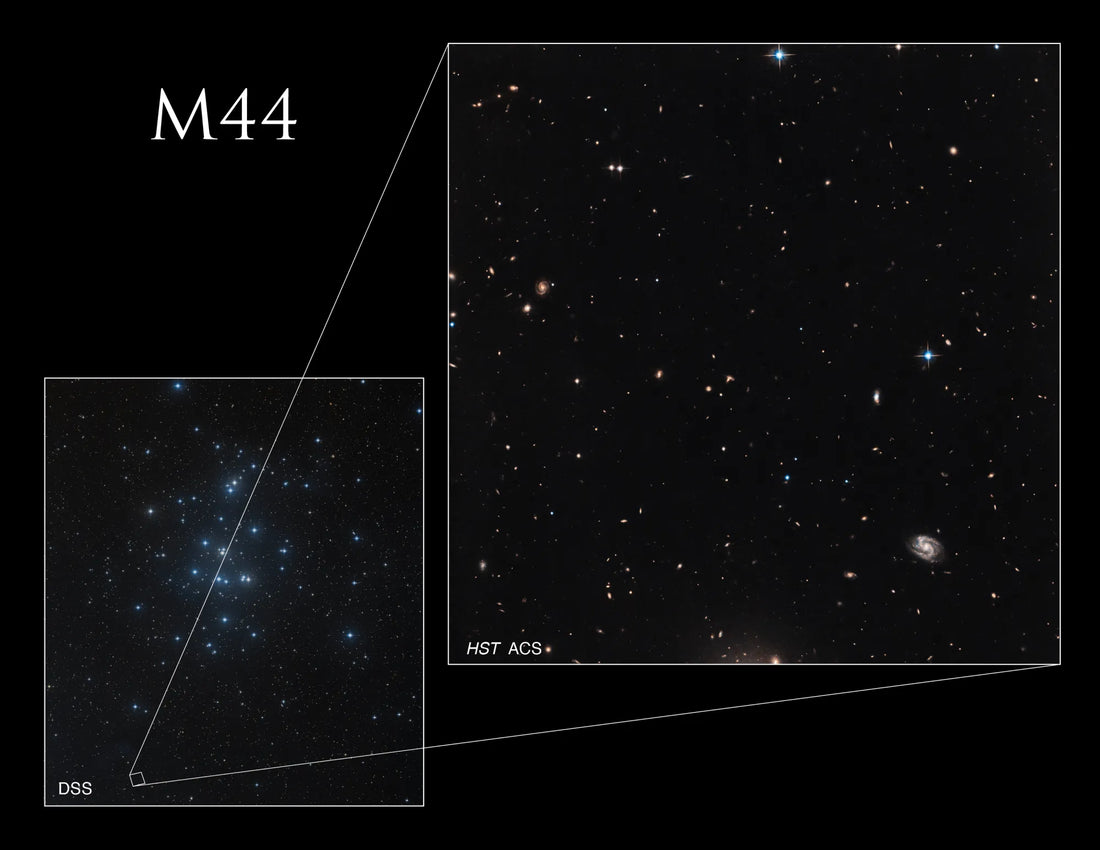
Astronz Object of the Week: The Beehive Cluster (M44)
High overhead in the autumn skies of Aotearoa, nestled in the faint zodiac constellation of Cancer, lies a shimmering swarm of stars that’s delighted skywatchers for millennia — the Beehive Cluster, also known as Messier 44 or Praesepe, meaning “the manger” in Latin.
A Cosmic Swarm
The Beehive Cluster truly lives up to its name. Through binoculars or a small telescope, it resembles a scattered collection of glowing bees, buzzing in the blackness. It's one of the closest open star clusters to Earth — just about 600 light-years away — and contains around 1,000 stars, most of them young and hot.
It’s visible to the naked eye under dark skies, appearing as a soft misty patch. But the magic begins when you bring binoculars or a wide-field telescope into play. You'll see dozens of blue-white stars in a compact field, some forming graceful arcs and chains.
Ancient Light with a History
Ancient astronomers were well-acquainted with this cluster. The Greeks mentioned it as early as 260 BC, and in Chinese astronomy, it was known as the Ghost Ghosts — part of a broader asterism used in fortune-telling and celestial storytelling.
Galileo Galilei was the first to resolve the Beehive into individual stars using a telescope in 1609, calling it a “nebulous mass” that revealed “more than 40 small stars.”
How to See It
To find the Beehive Cluster from New Zealand, wait for a clear evening in late autumn. Look for the faint constellation Cancer between Leo and Gemini — or, easier still, draw a line between the bright stars Pollux (in Gemini) and Regulus (in Leo), and scan along it with binoculars.
While not bright enough to rival showpieces like the Orion Nebula or Pleiades, the Beehive rewards patient stargazers with elegance and serenity.
Best viewing:
-
Use binoculars or a low-magnification eyepiece for best results — it’s a wide cluster, so you’ll want a broad field of view.
-
View from a dark sky location to see it with the naked eye.
-
Perfect around 10–11 PM in April, high in the north.
Stargazing Tip
If you're using a telescope like our 6" Dobsonian, you’ll get the best view with a wide-angle eyepiece — something around 25–30mm. The stars will sparkle like diamonds on velvet, with the cluster spanning much of the field.
